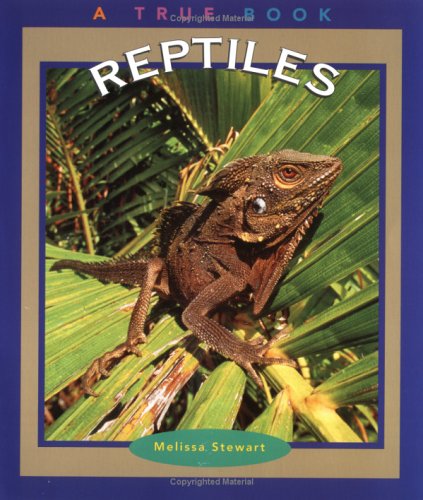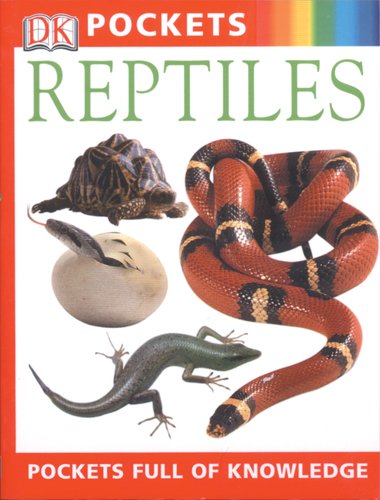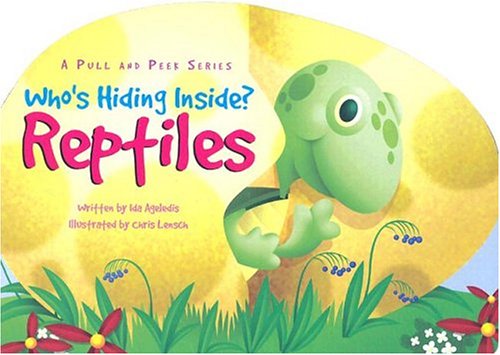-
Reptiles
Janet Riehecky
Paperback (Capstone Press, Jan. 1, 2017)Presenting turtles, lizards, snakes, alligators, and crocodiles! Reptiles is a photo-filled animal-science reference book for young readers and browsers. Not only will kids discover basic topics such as habitat, anatomy, and diet, but they'll also be treated to close-up looks at Komodo dragons and the SuperCroc―all written in a clear, concise way. P
P
-
Reptiles
Angela Royston
Paperback (Heinemann, Jan. 1, 2015)This fascinating series takes a very simple look at animal classifications, with each book focussing on a different group of animal. This book is about reptiles: what they do, how they behave, and how these characteristics are different from other groups of animals. Beautifully illustrated with colorful photographs, the book shows many examples of different types of reptiles in their natural environment.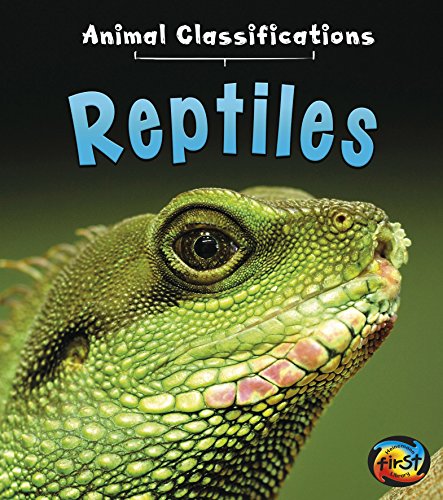 N
N
-
Reptiles
Mark Hutchinson
Hardcover (Simon & Schuster Books for Young Readers, July 26, 2011)Reptiles is packed with high-quality images and diagrams on everything from where reptiles live to how they hunt their prey and how they defend themselves from predators.What are turtles shells made of? How do lizards scare enemies? How can snakes "see" in the dark? Reptiles, a new book in the visually stunning, groundbreaking INSIDERS series, answers all these questions and more. Packed with high quality images and diagrams on everything from where reptiles live to how they hunt their prey and how they defend themselves from predators. Full-energy spreads approach the topics through unique and unexpected angles, taking the reader inside the action. Engaging and fun to read, this series will appeal to know-it-all kids and reluctant readers alike. U
U
-
Reptiles
Kate Hofmann
Paperback (Muddy Boots, July 15, 2016)This book brings the world of reptiles to life with eye-catching photos and captivating information about turtles, snakes, lizards, crocodiles, and their scaly-skinned kin. Readers will learn how reptiles survive in many habitats, from hot deserts to tropical forests and even under the sea. They’ll get an up-close look at reptiles’ amazing senses, tricky defenses, and wide variety of strategies for moving around, catching and eating food, and bearing young. What makes a reptile a reptile? (scaly skin, cold-blooded, vertebrates, young look like small adults)Taxonomy (four living groups: turtles and tortoises; lizards and snakes; crocodilians; tuatara)The world through reptile senses (examples of special senses such as snakes’ ability to taste air with the tongue and detect infrared heat, chameleons’ ability to move eyes independently)Strategies for getting and eating food – some reptiles eat plants (turtles, iguanas), others eat meat. Hunters use many different strategies, including constriction (boas) and venom (many other snakes, gila monster, komodo dragon). Chameleon shoots its long tongue out to catch prey . The egg-eating snake unhinges its jaw to swallow eggs.Defenses – camouflage (chameleons) and mimicry, shells (turtles), venom, warnings (rattlesnake), and specific “wow” examples such as losing a tail (skinks), squirting blood from eyes (horned lizard), and unfurling a giant skin flap around its head (frilled lizard)Adaptations for different habitats – dealing with extreme heat and lack of water (scaly skin keeps water in, thorny devil collects water from dew with grooves on its spikes). Others are adapted for freshwater or marine life, or for life in the trees.Amazing moves – geckos’ ability to grip with their feet, “flying” geckos and snakes, basilisk lizard that runs on water.Reproduction – most reptiles lay eggs, a few bear live young; most don’t take care of offspring but some do guard eggs or young. Temperature of eggs, rather than genetics, determines whether offspring are male or female.Conservation – threats, endangered species, and a few examples of how people are helping to protect reptiles.Invitations to explore – sidebars throughout give readers tips for investigating reptiles where they live.Fast facts – eye-catching boxes provide information for fact-collectors: the smallest and largest reptiles, the fastest and slowest, the number of species today vs. in ancient times when reptiles “ruled.”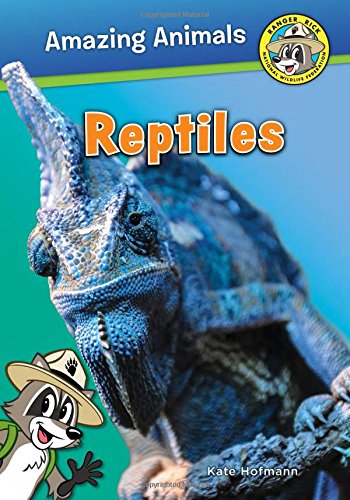 P
P
-
Reptiles
Ann O Squire
Paperback (C. Press/F. Watts Trade, Sept. 1, 2013)Slithering snakes, massive sea turtles, and fearsome alligators are just some of the 9,000 species that make up the animal class Reptilia.A True Book: Animal Kingdom series introduces young investigative readers to animal species, their habitats, unique abilities as well as an up-close look at the dangers these animals face today and find out how humans can help keep all animal species from disappearing forever. This series includes an age appropriate (grades 3-5) introduction to curriculum-relevant subjects and a robust resource section that encourages independent study. Readers will learn how lizards, crocodiles, and other reptiles search for food, care for their young, and survive in a variety of natural habitats. They will also get an up-close look at the dangers these animals face today and find out how humans can help keep reptile species from disappearing forever. S
S
